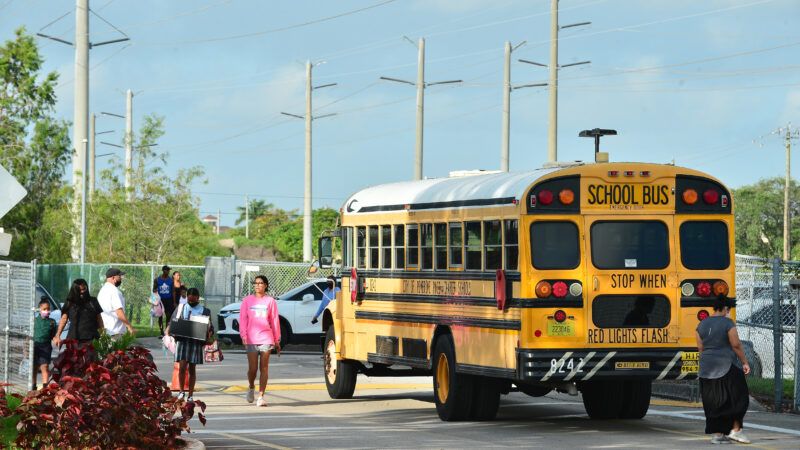Some States Will Let Students Transfer to a Better Public School, For a Price
While open-enrollment policies are intended to provide opportunities regardless of a student's zip code, many states fall short of this goal.

Pandemic school closures have more and more parents interested in opting out of traditional public schools. However, too many states make it hard even to transfer school districts, leaving many families—particularly low-income ones—left behind.
Forty-three states have open enrollment policies, which allow K-12 students to attend public schools for which they are not geographically zoned, provided the schools have open seats. While the policy is often intended to reduce inequality of opportunity and increase competition for students, a new report from the Reason Foundation (the nonprofit that publishes this website) argues that many states are failing to implement these programs.
According to the report, authored by policy analyst Jude Schwalbach, the most successful open enrollment programs should enact five "best practices." These practices include mandating tuition-free transfer to both in and out-of-district schools, transparent communication from the State Educational Agency, transparent capacity reporting, and a ban on schools charging tuition to out-of-district students. Most states fall far short of these goals. The Reason Foundation's report found that no state met all five "best practices" for open enrollment, and 40 states met only one or zero of the categories.
For example, many states make participation in transfer programs optional for school districts. In Ohio, this led many of the state's high-ranked suburban schools to opt out of the program, effectively negating one of the primary benefits of open enrollment: allowing lower-income families to send their children to high-quality schools without moving to a prohibitively expensive area.
Some states also allow schools to charge tuition for students taking advantage of open enrollment. In 2019, one school district in New York announced that they would begin charging non-resident students up to $21,500 in tuition, defeating the policy's purpose of helping poor families access public schools in richer zip codes.
The benefits to students are clear in states that rank highly in the Reason Foundation's analysis. For example, in Wisconsin, approximately 9 percent of the state's schoolchildren participated in the cross-district transfer option during the 2020-2021 school year—with parents primarily citing school academic performance as a reason to participate. Open enrollment programs also foster competition, encouraging all schools to improve. In California, school districts that experienced student loss after an open-enrollment policy was enacted improved their educational offerings—thus improving the state's educational options across the board.
Overall, the report "points to the fact that public school choice is happening through open enrollment, and there are states that are doing it well," says Schwalbach. "The ones that have good policies have really good policies, and there are several states that stand to vastly improve their open enrollment policies, really just by tweaking them."
If states want to improve the opportunities offered to public school students—no matter where they live or how much money their families earn—enacting a high-quality open-enrollment policy is low-hanging fruit.
Show Comments (12)